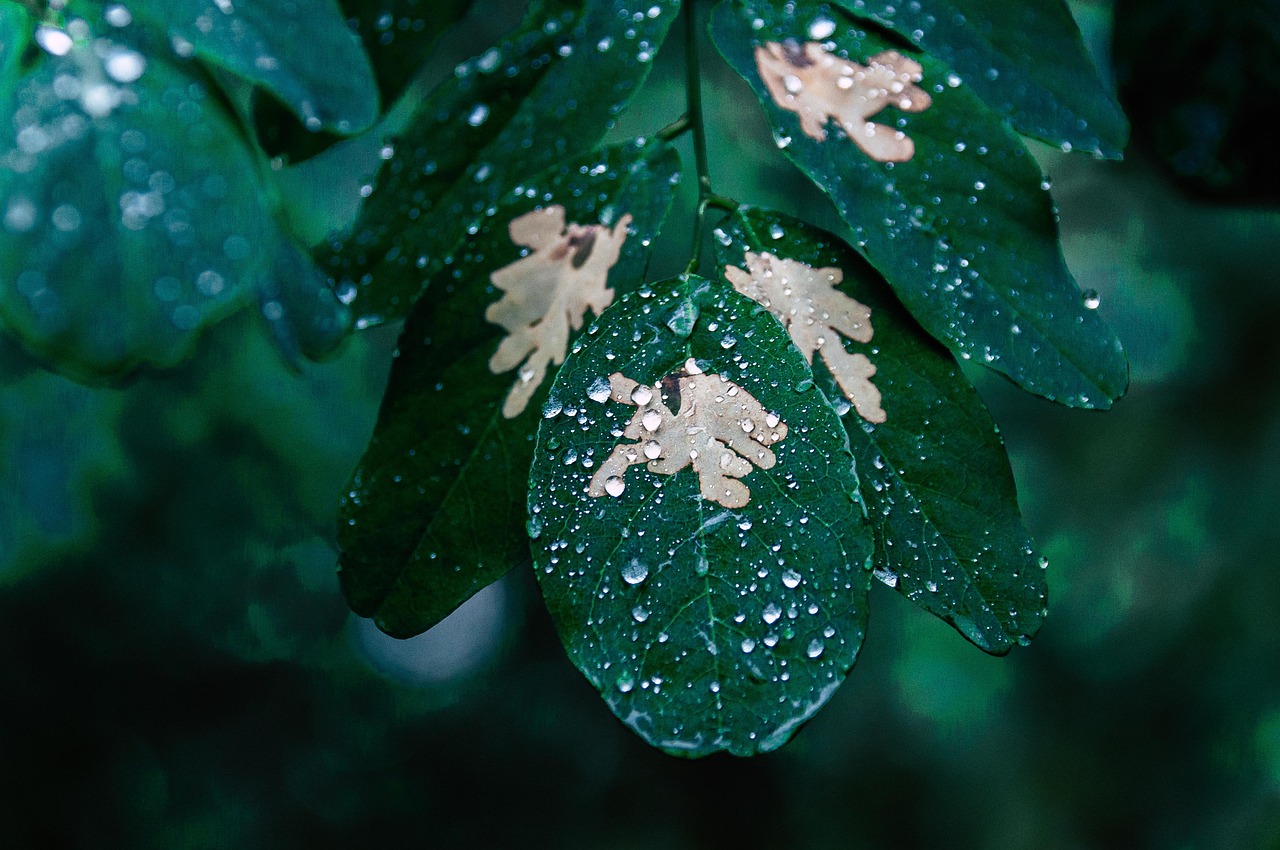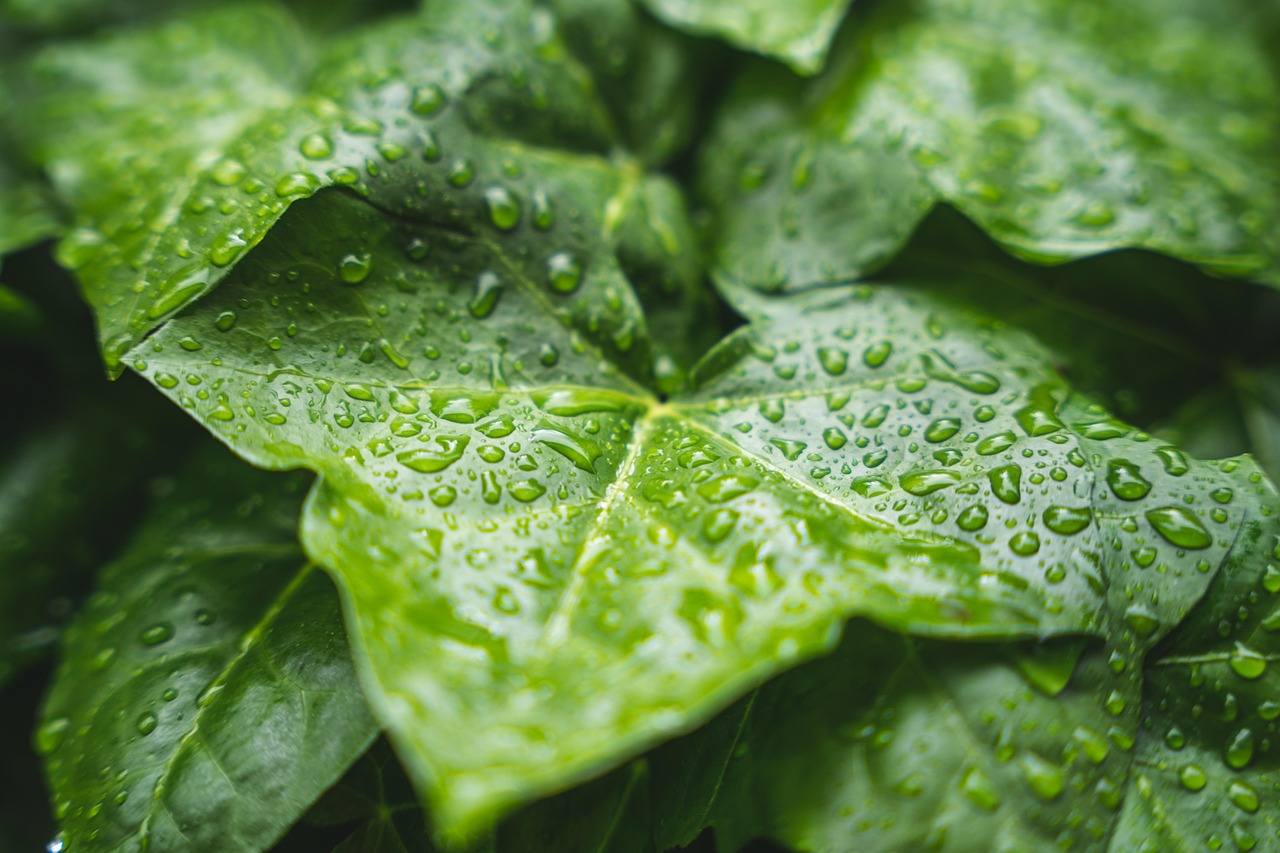The Rain Tree (Samanea saman) typically grows at a rate of 2 to 3 feet per year in tropical urban environments, depending on soil quality, water availability, and care practices.
Understanding Rain Tree Growth in Urban Settings
The Rain Tree is a popular choice for tropical urban landscapes. Its broad canopy provides shade, while its vibrant flowers add aesthetic value. However, understanding its growth rate is crucial for effective urban planting. The growth rate can vary widely based on multiple factors, including environmental conditions and maintenance practices.

In tropical regions, Rain Trees thrive due to the warm climate and abundant rainfall. They are known for their resilience and adaptability, making them suitable for various urban environments. However, urban settings often present unique challenges that can influence their growth rates. Factors such as soil compaction, pollution, and limited space can affect how quickly these trees grow.
To better understand the Rain Tree’s growth, several aspects must be considered. The following table outlines key factors influencing growth rates in urban settings:
| Factor | Impact on Growth Rate |
|---|---|
| Soil Quality | Well-draining, nutrient-rich soil promotes faster growth. |
| Water Availability | Sufficient watering encourages healthy growth, especially during dry spells. |
| Sunlight Exposure | Full sunlight enhances growth compared to shaded areas. |
| Temperature | Warm temperatures typical of tropical climates favor rapid growth. |
| Pest Control | Managing pests can prevent damage and support healthy growth. |
One of the critical aspects of cultivating Rain Trees in urban areas is ensuring they have adequate space to grow. These trees can reach heights of up to 100 feet and spread out significantly. When planted too close to buildings or other trees, their growth may be stunted. Therefore, proper planning and spacing are essential for optimal growth.

Growth Rate Variability
The growth rate of the Rain Tree can vary based on specific conditions. In ideal settings with ample space and resources, a Rain Tree may reach its full height in about 20 to 30 years. However, in less favorable conditions, it may take longer or exhibit slower growth. Additionally, young Rain Trees may initially grow slower until they establish a robust root system.
Regular maintenance practices can significantly influence the growth rate of Rain Trees. These practices include:
- Regular watering, especially during dry seasons
- Fertilization with a balanced nutrient mix
- Pruning to remove dead or diseased branches
- Pest and disease management
- Monitoring soil conditions and making amendments as necessary
Urban planners and landscape architects must consider these factors when integrating Rain Trees into cityscapes. The right approach can ensure that these trees not only survive but thrive in urban environments. Moreover, fostering healthy tree growth contributes to overall urban biodiversity and enhances the quality of life for residents.

As cities continue to expand and urban heat islands become a concern, planting species like the Rain Tree can mitigate heat effects while providing ecological benefits. Understanding their growth rates allows for better planning and management in urban forestry initiatives.
Conclusion on Growth Rate Factors
The Rain Tree’s growth rate is influenced by various environmental factors. By recognizing these influences, urban planners can make informed decisions that enhance the success of planting programs. Adequate care and consideration will lead to healthier trees and more vibrant urban landscapes.
Optimal Conditions for Rain Tree Growth
To maximize the growth rate of the Rain Tree in urban settings, it is essential to create and maintain optimal conditions. Several environmental factors play a crucial role in fostering healthy growth. Understanding these conditions can help urban planners and landscapers make informed decisions regarding planting locations and maintenance practices.
Soil Composition and Quality
The soil in which Rain Trees are planted significantly impacts their growth rate. Healthy soil should possess specific qualities:

- Nutrient-Rich: The soil should contain essential nutrients such as nitrogen, phosphorus, and potassium.
- Well-Draining: Soil must drain well to prevent waterlogging, which can lead to root rot.
- pH Level: A slightly acidic to neutral pH (between 6.0 and 7.0) is ideal for optimal nutrient absorption.
Before planting, soil testing is recommended. This process helps identify nutrient deficiencies or imbalances that can be addressed through amendments. Adding organic matter, such as compost, can improve soil structure and fertility.
Watering Requirements
Rain Trees require adequate water, especially during their early growth stages. Here are key points regarding their watering needs:
- Young Trees: Newly planted Rain Trees should be watered deeply once or twice a week until established.
- Established Trees: Once established, Rain Trees can tolerate short periods of drought but will still benefit from regular watering during dry spells.
- Seasonal Adjustments: Watering frequency may need to be increased during hot weather or prolonged dry periods.
Implementing a drip irrigation system can provide consistent moisture without overwatering. This method delivers water directly to the root zone, promoting healthy growth while conserving water.
Pest and Disease Management
Managing pests and diseases is crucial for ensuring the healthy growth of Rain Trees. Urban environments can harbor various pests that may negatively impact tree health. Some common pests include:
- Aphids: These small insects suck the sap from leaves, weakening the tree.
- Scale Insects: These pests attach to branches and leaves, causing damage and potentially spreading diseases.
- Termites: They can damage the tree’s structure by consuming wood.
Regular monitoring for signs of pest infestations is essential. If detected, integrated pest management (IPM) strategies can be implemented. These may include:
- Encouraging beneficial insects like ladybugs that feed on harmful pests.
- Using neem oil or insecticidal soaps as organic treatment options.
- Pruning affected branches to reduce infestations.
Disease Prevention
Diseases such as root rot and leaf blight can also affect Rain Trees. Preventive measures include:
- Avoiding Overwatering: Ensure proper drainage in the soil to prevent fungal infections.
- Pruning: Regularly remove dead or diseased branches to improve air circulation.
- Healthy Practices: Maintaining good hygiene around the tree by clearing debris can help prevent disease spread.
The Role of Mulching
Mulching is another effective practice for enhancing Rain Tree growth. Applying a layer of organic mulch around the base of the tree offers several benefits:
- Moisture Retention: Mulch helps retain soil moisture, reducing the need for frequent watering.
- Weed Suppression: A good mulch layer inhibits weed growth that competes for nutrients and water.
- Temperature Regulation: Mulch moderates soil temperatures, protecting roots from extreme temperatures.
The ideal mulch materials include wood chips, bark, straw, or shredded leaves. A 2 to 4-inch layer is typically sufficient, but care should be taken not to pile mulch against the trunk to avoid rot.
The Impact of Urban Heat Islands
Cities often experience “urban heat islands,” where temperatures are significantly higher than in surrounding rural areas due to human activities and infrastructure. Rain Trees can play a vital role in mitigating these effects:
- Shade Provision: Their broad canopy provides shade, helping cool surrounding areas.
- Air Quality Improvement: Trees absorb carbon dioxide and release oxygen, enhancing urban air quality.
- Biodiversity Support: They offer habitat for various urban wildlife species, contributing to ecosystem health.
The strategic planting of Rain Trees in urban areas can enhance the environment while promoting biodiversity and improving the quality of life for residents.
Ecological Benefits of Rain Trees in Urban Areas
Rain Trees offer numerous ecological benefits when planted in urban environments. These benefits not only contribute to the health of the trees themselves but also enhance the overall ecosystem within cities. Understanding these advantages highlights the importance of integrating Rain Trees into urban landscaping.
Carbon Sequestration
One of the most significant ecological roles of Rain Trees is their ability to sequester carbon dioxide. This process helps mitigate climate change by reducing the amount of greenhouse gases in the atmosphere. Here are some key points regarding carbon sequestration:
- Growth Rate Impact: As Rain Trees grow, they absorb increasing amounts of CO2, with larger trees sequestering more carbon over their lifetimes.
- Long-Term Storage: Mature trees store carbon in their biomass, including branches, trunks, and roots, providing a long-term solution for carbon management.
- Community Benefits: By planting Rain Trees, communities can collectively reduce their carbon footprints, contributing to a healthier environment.
Stormwater Management
Rain Trees play a vital role in managing stormwater in urban areas. Their root systems and canopy help absorb rainfall, reducing runoff and minimizing the risk of flooding. Consider these aspects of stormwater management:
- Soil Absorption: The roots of Rain Trees absorb significant amounts of water, allowing for better infiltration into the soil.
- Canopy Interception: The tree canopy intercepts rain, reducing the amount that reaches the ground and slowing down runoff.
- Pollutant Filtration: As water passes through the soil, it can filter out pollutants, improving water quality in urban waterways.
Urban Biodiversity Enhancement
Integrating Rain Trees into city landscapes contributes to urban biodiversity. They serve as crucial habitats for various species, including birds, insects, and mammals. The following highlights how Rain Trees promote biodiversity:
- Habitat Creation: Rain Trees provide nesting sites and food sources for birds and other wildlife.
- Pollinator Attraction: Their flowers attract pollinators such as bees and butterflies, essential for maintaining healthy ecosystems.
- Food Source: The seeds and leaves of Rain Trees can serve as food for various animal species.
Cultural and Aesthetic Value
Apart from ecological benefits, Rain Trees also hold cultural and aesthetic significance in urban settings. Their majestic appearance and historical importance make them valuable additions to city landscapes.
Cultural Significance
In many cultures, Rain Trees are considered symbols of strength and resilience. They are often associated with community gatherings, celebrations, and cultural traditions. Here are some points regarding their cultural significance:
- Community Spaces: Large Rain Trees often serve as focal points in parks or public squares, providing shaded areas for social interaction.
- Cultural Heritage: In some regions, these trees have historical significance due to their age or associations with local folklore.
- Education Opportunities: Schools and community organizations can use Rain Trees as educational tools to teach about ecology and conservation.
Aesthetic Contributions
The visual appeal of Rain Trees enhances the beauty of urban environments. Their broad canopies, unique foliage, and colorful flowers provide year-round interest. Consider the following aesthetic contributions:
- Shade Canopy: The expansive canopy creates comfortable shaded areas for residents to enjoy recreational activities.
- Seasonal Beauty: Rain Trees produce vibrant flowers that add color to the landscape during flowering seasons.
- Landscape Design: Their size and shape can be used strategically in landscape design to create focal points or natural barriers.
Challenges in Urban Planting
While there are many benefits associated with planting Rain Trees in urban areas, certain challenges must also be addressed. Understanding these challenges helps ensure successful integration into city landscapes.
Space Limitations
Urban environments often present space constraints that can hinder the growth of Rain Trees. Key challenges include:
- Limited Root Space: Concrete surfaces and compacted soil can restrict root growth, affecting nutrient uptake and overall health.
- Crowded Plantings: Planting too closely with other trees or structures can lead to competition for resources.
- Canopy Interference: Buildings or overhead utilities may limit the vertical growth potential of Rain Trees.
Pest and Disease Pressure
The urban environment can exacerbate pest and disease issues for Rain Trees. Factors contributing to this pressure include:
- Pollution Stress: Air pollution can weaken trees, making them more susceptible to pests and diseases.
- Diverse Pest Populations: Urban areas can harbor a variety of pests that may not be found in rural settings.
- Lack of Natural Predators: Urbanization often reduces populations of natural predators that control pest populations.
Addressing these challenges requires careful planning and ongoing management efforts to support the health and growth of Rain Trees in urban environments.
Future Considerations for Rain Tree Planting
As urban areas continue to grow, it becomes increasingly important to consider the long-term sustainability of tree planting initiatives. For Rain Trees, this includes developing strategies that promote healthy growth rates while addressing the challenges they face in urban environments. Here are some future considerations that can enhance the success of Rain Tree plantings:
Community Involvement and Education
Engaging the community in tree planting and maintenance can significantly impact the success of Rain Tree initiatives. Educational programs can equip residents with knowledge about:
- Tree Care: Teaching proper watering, mulching, and pruning techniques will help ensure that trees thrive.
- Pest Management: Informing community members about identifying pests and diseases can lead to quicker interventions.
- Environmental Benefits: Raising awareness about the ecological benefits of trees can foster community pride and advocacy for urban forestry initiatives.
Community involvement can also foster a sense of ownership over local green spaces, encouraging residents to take an active role in their care and preservation.
Innovative Planting Techniques
Adopting innovative planting techniques can help mitigate some of the challenges faced by Rain Trees in urban settings. These techniques include:
- Soil Amendments: Utilizing biochar or other organic amendments can improve soil structure and fertility, enhancing root growth.
- Vertical Gardens: In limited spaces, vertical planting systems can be explored to maximize green coverage.
- Smart Irrigation Systems: Implementing technology-driven irrigation systems can provide trees with adequate moisture while conserving water.
Such innovations can lead to healthier trees and more resilient urban ecosystems.
Monitoring and Research
Ongoing research into the growth patterns of Rain Trees in urban environments is essential to understanding their needs. Monitoring tree health through:
- Regular Assessments: Frequent evaluations of tree health can help identify issues early.
- Data Collection: Gathering data on growth rates, pest pressures, and environmental conditions can inform future planting strategies.
- Collaboration with Universities: Partnering with academic institutions can facilitate research projects focused on urban forestry challenges.
This commitment to research will contribute to the development of best practices for planting and maintaining Rain Trees in cities.
Final Thoughts
The Rain Tree is a remarkable species that offers numerous benefits to tropical urban environments. Its ability to grow quickly under optimal conditions makes it a valuable asset for cities seeking to enhance their green spaces. However, to realize its full potential, careful consideration must be given to the various factors influencing its growth rate and health.
By understanding the ecological, cultural, and aesthetic importance of Rain Trees, urban planners and community members can work together to create sustainable landscapes. Addressing challenges such as space limitations, pest management, and environmental stresses is crucial for success. Through community engagement, innovative techniques, and ongoing research, we can ensure that Rain Trees continue to flourish in urban settings.
The integration of Rain Trees into cityscapes not only improves air quality and biodiversity but also enhances the overall quality of life for residents. As cities evolve, embracing the growth potential of Rain Trees will play a pivotal role in creating healthier, greener urban environments for future generations.
